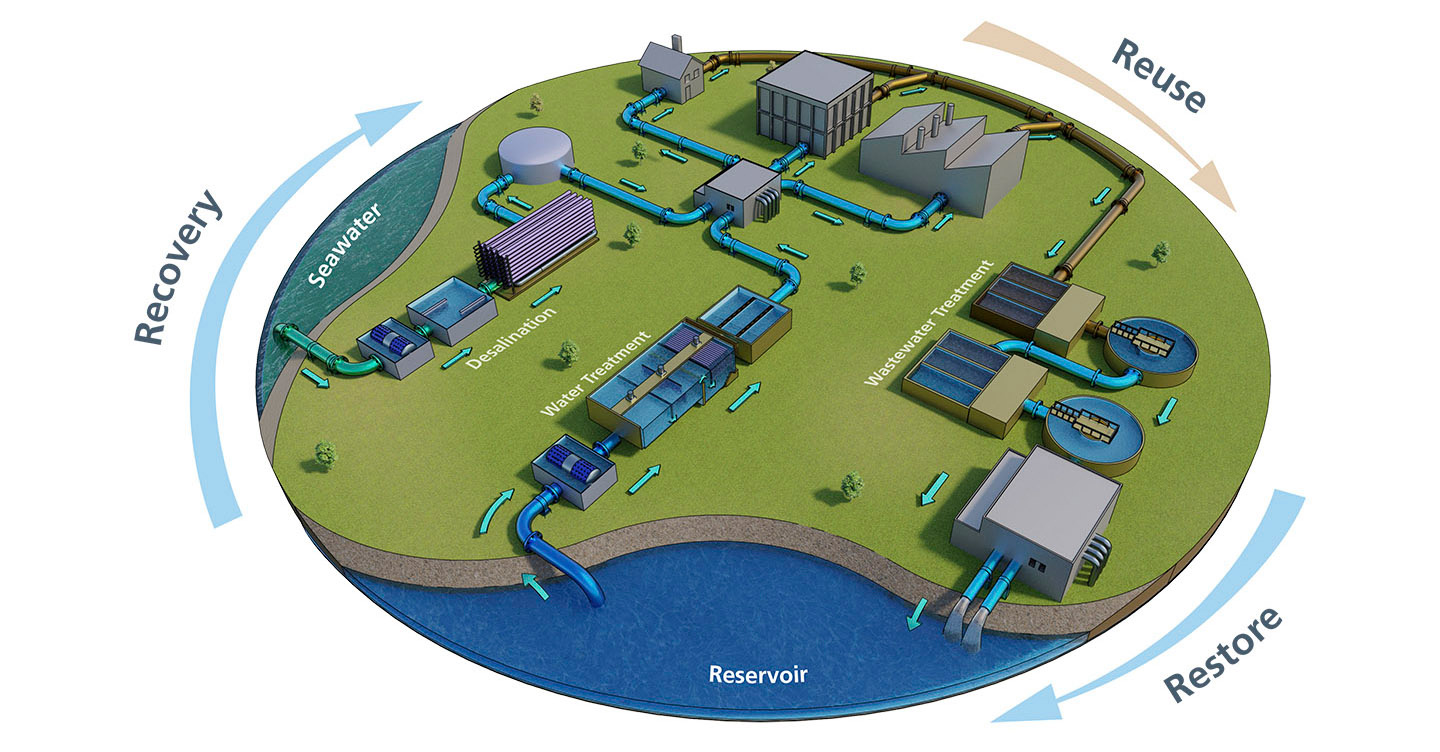The role of desalination in the energy transition
Desalination and the Water Circular Economy
As global water scarcity intensifies due to climate change, desalination is becoming a vital solution for ensuring access to clean, safe water. The water circular economy is a sustainable model that maximizes water reuse and minimizes environmental impact.
In this model, seawater is processed through a desalination plant to produce fresh water for industrial and residential use. Simultaneously, water from natural reservoirs is treated in water treatment facilities. Wastewater from both sources is then processed in advanced wastewater treatment plants and returned to the reservoir, creating a closed-loop system.
This circular approach:
- Reduces water waste
- Lowers greenhouse gas emissions
- Enhances climate resilience
- Supports long-term water security
Why Desalination Matters
With only 3% of the world’s water being freshwater - and much of that locked in glaciers or inaccessible - desalination technology is essential. It transforms saltwater into potable water, making it suitable for drinking, agriculture, and industrial applications.
As the climate crisis accelerates, so does the urgency to invest in sustainable water solutions. Desalination offers a reliable, scalable way to meet growing water demands in arid regions and urban centers alike.
Desalination – enabling a sustainable future
There are two main types of desalination processes - multi-stage flash distillation (also known as thermal desalination) and reverse osmosis.
Multi-stage flash distillation is found mainly in existing plants and is an older, more traditional form of desalination, while reverse osmosis is more commonly used in new sites.
Reverse osmosis forces the water under extremely high pressure through a membrane to remove salt and impurities and is later treated with chemicals like fluoride and chlorine to ensure its safety.
Alternatively, Multi-stage flash uses heat to distil seawater, removing the salt and leaving clean potable water.
Our role in desalination
Desalination plants are valve and actuator intensive. Both desalination processes water through several complicated stages. Efficient, precise control of the water and other liquids is essential.
Energy consumption within desalination plants is an important concern to operators, and energy recovery systems are important on desalination sites. Electric actuators are efficient to run and have low inactive energy use.
Rotork actuators are a reliable and efficient choice, offering safe and dependable operation. We concentrate on taking care of desalination plants’ primary needs. These include supporting sites throughout the planning and specification phases to provide significant value to our customers and their operations. We have a global network of local service centres and engineers and our service solutions increase plant efficiency and reduce maintenance costs.
Rotork actuators are a reliable and efficient choice, offering safe and dependable operation.

Hari Babu, Head of Strategy Water & Power
A desalination plant in Spain, the largest reverse osmosis desalination plant in Europe, was enhanced by installing IQ and IQT actuators. The site supplies 200,000 cubic metres/day of potable water to residents of Barcelona.
More than 400 Rotork IQ and IQT intelligent electric actuators were installed and are now controlled by eight Rotork Master Station control centres, providing a direct interface for each actuator. IQ3 actuators have the necessary ingress protection that is needed for use within water applications.L
Our desalination solutions
Rotork manufactures a range of intelligent flow control solutions that are ideally suited to desalination applications. A selection of our most suitable products is shown below.


